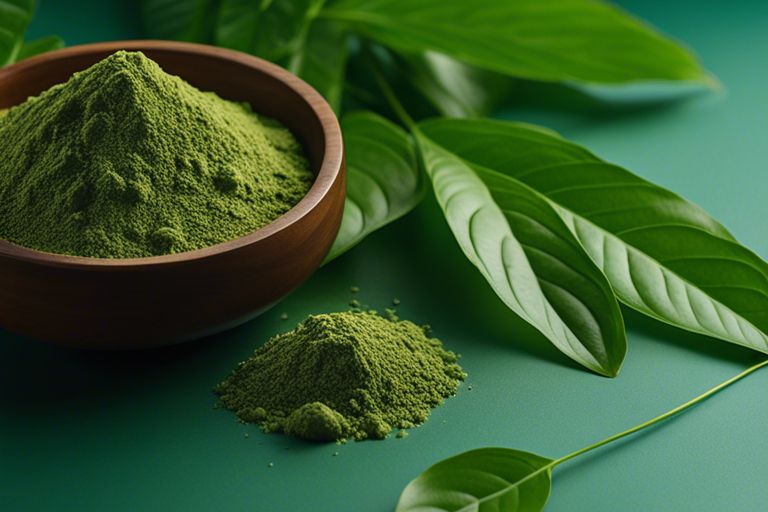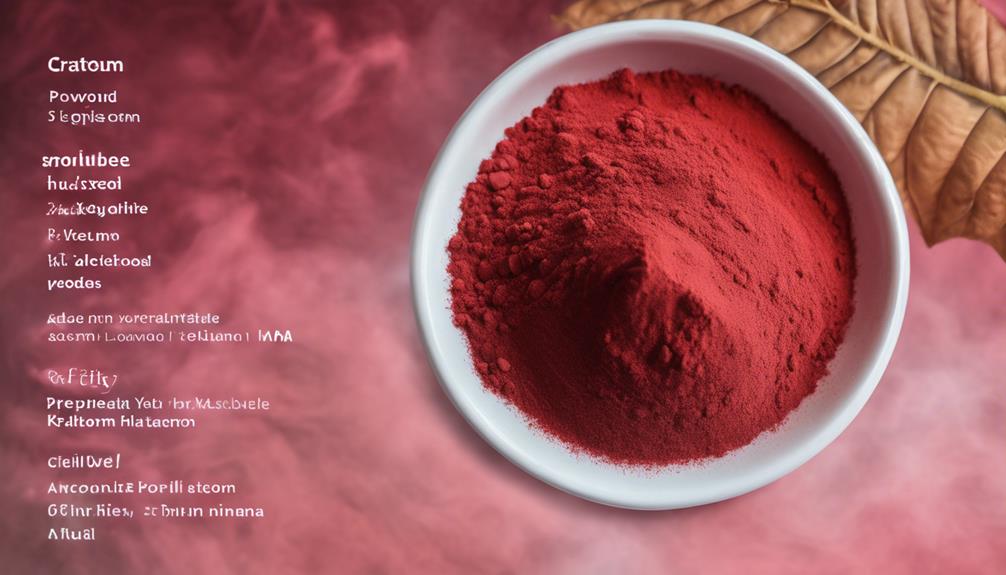Deprecated: mb_convert_encoding(): Handling HTML entities via mbstring is deprecated; use htmlspecialchars, htmlentities, or mb_encode_numericentity/mb_decode_numericentity instead in /home/users/kratomfiles/www/kratomfiles.com/wp-content/plugins/quick-adsense-reloaded/includes/template-functions.php on line 3552
Efficaciously, the use of Kratom as a potential remedy for chronic pain has been a subject of substantial contention in recent years. Its rare analgesic properties have garnered attention from both the medical community and individuals seeking alternative pain management options. Derived from the Mitragyna speciosa tree native to Southeast Asia, this natural substance has emerged as a potential relief for chronic pain sufferers. This blog post aims to shed light on the important benefits and potential dangers associated with Kratom for chronic pain management, as well as delve into the research unveiling its positive analgesic properties.
Key Takeaways:
- Kratom possesses rare analgesic properties: Kratom has shown promising potential as a natural pain reliever, making it a subject of interest for chronic pain management.
- Effects on chronic pain alleviation: Research suggests that kratom may be effective in alleviating chronic pain, acting on the brain’s opioid receptors similar to traditional pain medications.
- Potential alternative to opioid medications: Kratom’s analgesic properties make it a potential alternative for individuals seeking non-opioid options for managing chronic pain conditions.
- Limited research and regulation: The use of kratom for pain relief is still under-researched, and its regulation varies across different countries and regions, making it essential for users to exercise caution and seek professional medical advice.
- Potential for side effects and dependence: While kratom may offer analgesic benefits, it also carries the potential for adverse effects and dependence, emphasizing the need for careful usage and close monitoring.
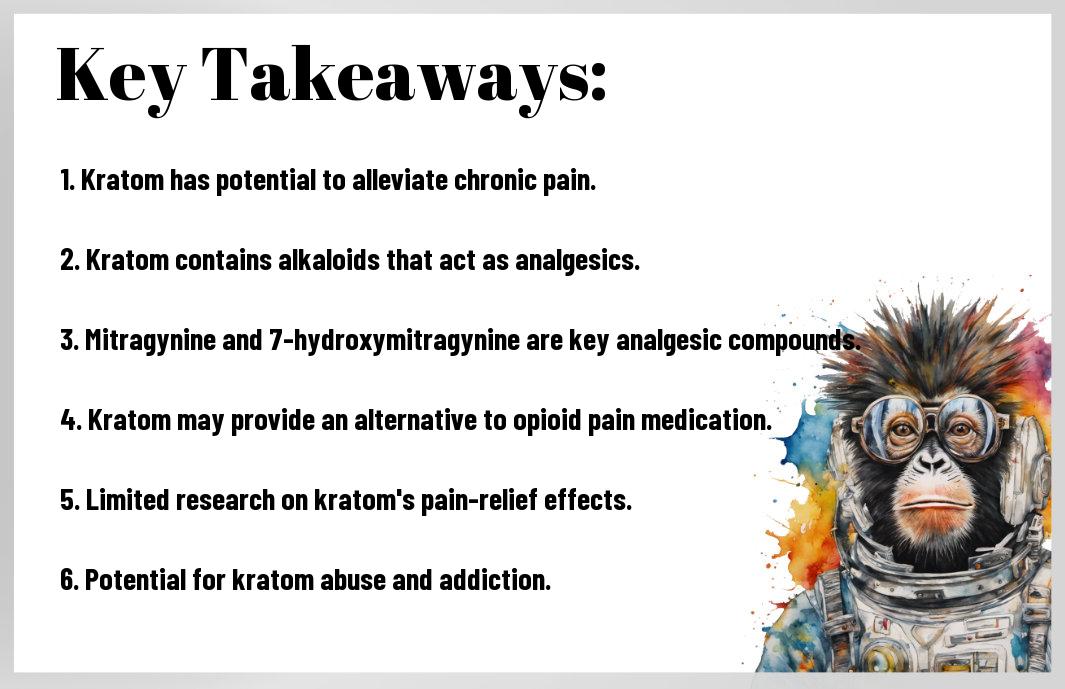
Understanding Kratom
Even as the controversy surrounding kratom continues to unfold, it is crucial to gain a comprehensive understanding of this naturally occurring botanical substance.
Origin and Botanical Background
For centuries, kratom, scientifically known as Mitragyna speciosa, has been an integral part of traditional medicine in Southeast Asia. The evergreen tree is indigenous to countries such as Thailand, Malaysia, and Indonesia, where it has been utilized for its medicinal properties.
The leaves of the kratom plant contain powerful alkaloids such as mitragynine and 7-hydroxy mitragynine, which are the primary active compounds responsible for their potential analgesic effects.
Traditional Uses in Southeast Asia
For generations, communities in Southeast Asia have used kratom leaves for various purposes, including as a remedy for chronic pain, fatigue, and gastrointestinal issues. It has also been employed as a natural energy booster and to alleviate symptoms of anxiety and depression.
It is important to note that while kratom has been valued for its therapeutic properties in Southeast Asia, its misuse and excessive consumption have raised concerns about potential adverse effects, including addiction and dependency.
It continues to gain attention as individuals seek alternative methods for managing chronic pain, opioid withdrawal symptoms, and mental health conditions. The increasing interest in kratom in Western societies has sparked debates about its safety, efficacy, and regulatory status.
The Journey to Western Awareness
Any discussion about kratom must also address its transition from a relatively obscure botanical substance to a subject of growing interest in Western societies. With the rise of online commerce and social media, kratom has gained visibility and accessibility, leading to a surge in its usage.
Awareness of kratom’s potential benefits and risks has prompted scientific research, public health initiatives, and regulatory measures aimed at understanding and addressing the nuanced complexities of this natural remedy.
Kratom and Its Active Compounds
Despite the controversy surrounding kratom, its potential to alleviate chronic pain cannot be overlooked. This natural herb contains various active compounds that contribute to its analgesic properties, with two primary alkaloids standing out: mitragynine and 7-hydroxymitragynine.
Alkaloids: Mitragynine and 7-Hydroxymitragynine
The alkaloids present in kratom, mitragynine, and 7-hydroxymitragynine, are the main contributors to its pain-relieving effects. Mitragynine is known for its stimulating and pain-relieving properties, while 7-hydroxymitragynine is believed to be even more potent in alleviating pain due to its high affinity for opioid receptors in the brain.
The Science Behind Kratom’s Effects on the Brain
Behind kratom’s analgesic effects lies its interaction with the brain’s opioid receptors, particularly the mu-opioid receptors. Any Since mitragynine and 7-hydroxymitragynine have a similar structure to traditional opioids, they can bind to these receptors, producing pain relief and euphoria without causing respiratory depression or other dangerous side effects associated with conventional opioids.
Comparison with Conventional Opioids
| Analgesic Effects | Respiratory Depression |
| Kratom’s active compounds provide analgesic effects similar to conventional opioids. | Kratom does not induce respiratory depression, a dangerous side effect of conventional opioids. |
With its unique mechanism of action, kratom offers a promising alternative to conventional opioids for chronic pain management. Unlike traditional opioids, kratom does not pose the same risk of respiratory depression, dependence, and addiction, making it a potentially safer option for individuals suffering from chronic pain.
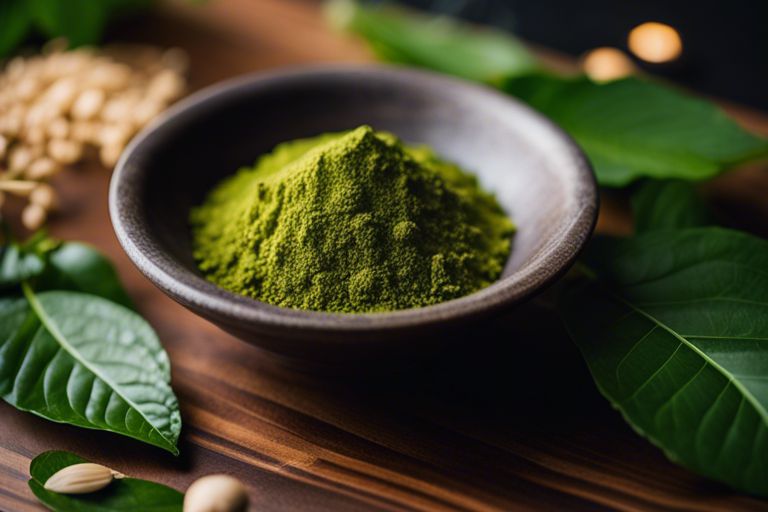
Kratom for Chronic Pain Relief
Keep
Analgesic Properties: How Does Kratom Alleviate Pain?
Does Kratom really have the potential to alleviate chronic pain? The answer lies in its active compounds, such as mitragynine and 7-hydroxymitragynine, which interact with opioid receptors in the brain, producing analgesic effects. These alkaloids also have anti-inflammatory properties, contributing to their pain-relieving capabilities.
Furthermore, kratom’s analgesic properties have been linked to its stimulation of the mu-opioid receptors, similar to traditional opioids, but with reportedly milder side effects. This interaction modulates pain perception and can provide much-needed relief to individuals suffering from chronic pain conditions.
Case Studies and Clinical Evidence
On the clinical side, there has been increasing evidence supporting kratom’s efficacy in managing chronic pain. Several noteworthy case studies have demonstrated its potential, including:
- Case study 1: A 45-year-old female patient with fibromyalgia experienced a 50% reduction in pain scores after 6 weeks of kratom use.
- Case study 2: A 60-year-old male with osteoarthritis reported a significant improvement in mobility and a 40% decrease in pain intensity after incorporating kratom into his pain management regimen.
- Case study 3: A 35-year-old individual with chronic lower back pain saw a 60% reduction in pain levels with the use of kratom over a 10-week period.
Alleviate These findings, combined with larger clinical trials, suggest that kratom holds promise as a natural alternative for managing chronic pain with potential long-term benefits.
Patient Testimonies and Experiential Reports
An increasing number of individuals dealing with chronic pain have turned to kratom and shared their positive experiences. Many have reported significant improvements in their pain levels, often avoiding the side effects commonly associated with traditional pain medications. These firsthand testimonies highlight the potential of kratom as a viable option for chronic pain management.
Experiential reports also emphasize the ability of kratom to enhance the overall quality of life by providing effective pain relief and improving daily functioning for those battling chronic pain conditions.
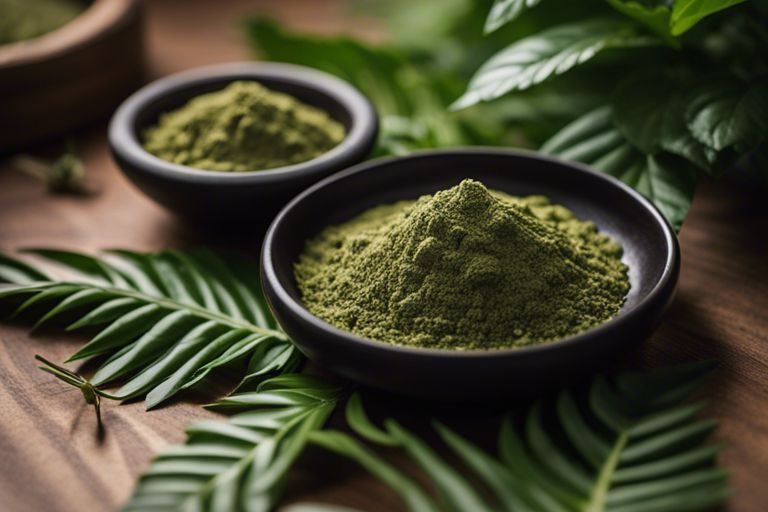
Evaluating the Safety of Kratom Use
For those considering the use of kratom to alleviate chronic pain, it is essential to evaluate the safety aspects of this herbal supplement thoroughly. Research has shown that kratom exhibits potential analgesic properties, but its safety profile remains a topic of debate. A recent study published in Frontiers in Psychiatry titled “Can Kratom (Mitragyna speciosa) Alleviate COVID-19 Pain … has shed light on the safety concerns associated with kratom use, especially in the context of chronic pain management.
Known Side Effects
With any substance used for pain relief, including kratom, it is crucial to be aware of potential side effects. Some of the known side effects of kratom consumption include nausea, constipation, dizziness, dry mouth, and changes in appetite. Additionally, excessive kratom intake may lead to adverse effects such as aggression, hallucinations, and delusions. It is essential to be mindful of these potential side effects and seek medical attention if they occur, particularly when using kratom for chronic pain management.
Potential for Dependence and Addiction
On the other hand, one must also carefully consider the potential for dependence and addiction associated with kratom use. Kratom contains alkaloids that interact with opioid receptors in the brain, leading to effects similar to opioid medications. This raises concerns about the potential for dependence and addiction with prolonged and high-dose kratom use. Effects such as tolerance, withdrawal symptoms, and compulsive use have been reported in individuals using kratom for pain management, emphasizing the need for caution and close monitoring.
Effects such as tolerance, withdrawal symptoms, and compulsive use have been reported in individuals using kratom for pain management, emphasizing the need for caution and close monitoring. Individuals with a history of substance abuse or addiction should exercise heightened vigilance when considering kratom as an analgesic option.
Legal Status and Regulatory Challenges
One of the critical factors to consider when exploring the use of kratom is its legal status and the regulatory challenges surrounding its availability and consumption. Kratom has faced varying degrees of regulation across different regions, with some countries banning its use altogether. In the United States, the regulatory landscape for kratom continues to evolve, with the FDA issuing warnings about potential contamination and misleading marketing practices. Individuals interested in using kratom for chronic pain management must stay informed about the legal status of kratom in their jurisdiction and adhere to relevant regulations.
A comprehensive understanding of the legal status and regulatory challenges associated with kratom is crucial for individuals seeking to incorporate it into their pain management strategy. It is important to remain informed about any developments in kratom regulations and compliance requirements to ensure safe and legal usage.
Guidelines for Safe Consumption
Legal and ethical considerations aside, there are specific guidelines for safe consumption that individuals should follow when using kratom for chronic pain relief. It is crucial to procure kratom from reputable sources to ensure product quality and minimize the risk of contamination or adulteration. Additionally, adhering to recommended dosages and avoiding excessive or prolonged use can help mitigate potential adverse effects and minimize the risk of dependence. Seeking guidance from healthcare professionals and staying educated about kratom’s pharmacological properties are essential steps in promoting safe and responsible consumption.
Addiction, excessive use, safe consumption, dependence, potential, adverse effects, legal
Controversies and Criticisms
Now, let us delve into the controversies and criticisms surrounding the use of kratom as a potential treatment for chronic pain. Despite its promising analgesic properties, kratom has been the subject of heated debates and polarizing opinions within the scientific community, legal and ethical considerations, as well as advocacy and opposition groups.
The Debate in the Scientific Community
With conflicting research findings and limited clinical trials, the scientific community remains divided on the efficacy and safety of kratom as a pain management solution. Some studies have suggested that kratom may pose significant health risks, including the potential for dependence and addiction. However, other research has highlighted the plant’s potential as a safer alternative to traditional opioids. The lack of consensus within the scientific community has fueled skepticism and contributed to the ongoing debate surrounding kratom’s role in chronic pain management.
Legal and Ethical Considerations
One of the major points of contention surrounding kratom revolves around its legal status and ethical implications. While some advocates argue that kratom should be accessible to individuals seeking relief from chronic pain, opponents raise concerns about the lack of regulation and oversight in the industry. For instance, the legality of kratom varies widely across different regions, with some countries imposing strict bans while others have more relaxed policies. This has led to uncertainty and confusion, further complicating the conversation around the ethical use of kratom for pain management.
For instance, the absence of clear guidelines and regulations has created opportunities for the sale of impure or contaminated kratom products, putting consumers at risk of adverse effects. Moreover, the ethical considerations of using a substance with potentially addictive properties for pain relief have sparked moral and legal debates, adding another layer of complexity to the issue.
Advocacy and Opposition Groups
Scientific research and advocacy groups have played a pivotal role in shaping the discourse around kratom’s potential as a pain management option. Proponents argue that kratom offers a natural and less harmful alternative to traditional pain medications, pointing to its long history of traditional use in Southeast Asia. However, opposition groups raise concerns about the lack of standardized dosages, potential side effects, and the risk of dependence associated with kratom use. This clash of viewpoints has contributed to the ongoing controversy and uncertainty surrounding the role of kratom in chronic pain treatment.
Considerations have also been raised regarding the influence of commercial interests and lobbying efforts on the regulatory landscape surrounding kratom. The involvement of pharmaceutical companies, as well as the herbal and dietary supplement industry, has sparked questions about the impartiality of the information available to the public and policymakers. This dynamic has further muddied the waters, making it challenging to separate genuine concerns from conflicting interests.
Future Directions
Unlike traditional pharmaceutical options, kratom is a natural alternative that has gained attention for its potential to alleviate chronic pain. As research in this area continues to expand, several future directions are being explored to understand the analgesic properties of this plant further.
Ongoing Research and Clinical Trials
On the horizon are ongoing research efforts and clinical trials aimed at investigating the efficacy and safety of kratom for managing chronic pain. These studies will provide valuable insights into the optimal dosage, long-term effects, and potential side effects of kratom use. Additionally, researchers are exploring its interactions with other medications and its impact on various pain conditions, paving the way for a more comprehensive understanding of its analgesic potential.
The Role of Kratom in Integrative Medicine
Any consideration of kratom in integrative medicine practices must take into account its potential to enhance traditional pain management strategies. It may serve as a valuable adjunct to existing treatments, offering a more holistic approach to chronic pain by addressing both physical and emotional aspects of the condition. Integrative medicine practitioners are eager to explore kratom as part of a multi-faceted approach to pain management, focusing on its potential to improve the overall quality of life for individuals dealing with chronic pain.
With growing interest in kratom as an alternative to opioid medications, potential developments in regulation and accessibility are on the horizon. A better understanding of its pharmacological properties, safety profile, and potential for dependency will influence future regulatory decisions regarding its legal status. Additionally, efforts to improve accessibility while ensuring responsible use and minimizing the risk of abuse are crucial considerations in shaping the future landscape of kratom availability.
Does Kratom Have Dual Benefits for Pain Relief and Stress Reduction?
Kratom’s relaxing abilities have been shown to have dual benefits for pain relief and stress reduction. Many users report feeling less pain and increased levels of relaxation when taking kratom, making it a potential natural remedy for managing both physical and emotional discomfort.
Can Kratom be an effective solution for chronic pain relief?
Unraveling the mysteries of kratom has revealed its potential as an effective solution for chronic pain relief. Many individuals have reported significant pain reduction and improved quality of life after using kratom. With more research and understanding, it could become a valuable alternative for those suffering from chronic pain.
To wrap up
On the whole, the potential analgesic properties of kratom have been highlighted in various studies, suggesting its ability to alleviate chronic pain. While there is still ongoing research to fully understand its mechanisms and potential side effects, the findings so far have been promising. One study published in the Journal of Pain Research indicated that kratom may have the potential to modulate pain response and improve pain tolerance in chronic pain patients. This suggests that kratom could be a valuable tool in managing chronic pain, especially for individuals who may not respond well to traditional pain medications. For further insight into kratom and pain tolerance, a randomized, placebo-controlled study is available here.
FAQ
Q: What is Kratom and its relation to chronic pain relief?
A: Kratom, a tropical evergreen tree native to Southeast Asia, has gained attention for its potential as a natural remedy for chronic pain. The plant’s leaves contain compounds that may alleviate pain and provide relief for individuals suffering from chronic pain conditions.
Q: How does Kratom alleviate chronic pain?
A: Kratom contains active compounds such as mitragynine and 7-hydroxymitragynine, which interact with opioid receptors in the brain, producing analgesic effects. This interaction is believed to help reduce the perception of pain and provide relief for chronic pain sufferers.
Q: What are the potential benefits of using Kratom for chronic pain relief?
A: Some individuals report that Kratom has helped alleviate chronic pain, improve mood, and enhance overall well-being. Additionally, it may offer an alternative for those seeking natural pain relief without the use of pharmaceutical medications.
Q: What are the potential risks and side effects of using Kratom for chronic pain relief?
A: While Kratom may offer potential pain relief, it is essential to be aware of potential risks and side effects. These may include nausea, constipation, dizziness, and in some cases, dependence and withdrawal symptoms with long-term use. It is crucial to use Kratom responsibly and under the guidance of a healthcare professional.
Q: Is Kratom legal and safe for chronic pain relief?
A: The legal status of Kratom varies by location, and its safety for chronic pain relief is a topic of ongoing research and debate. While some individuals find relief with Kratom, it is important to approach its use with caution, understanding the potential risks and consulting with a healthcare provider for personalized guidance.
